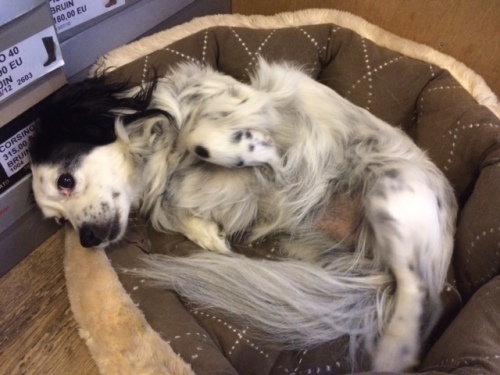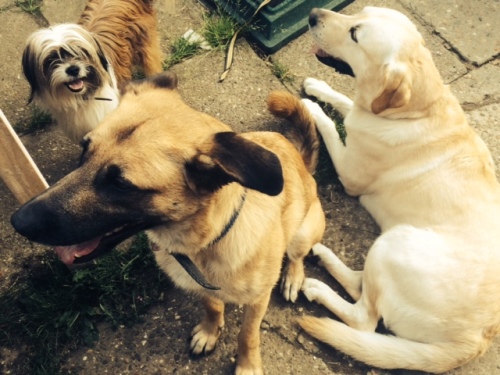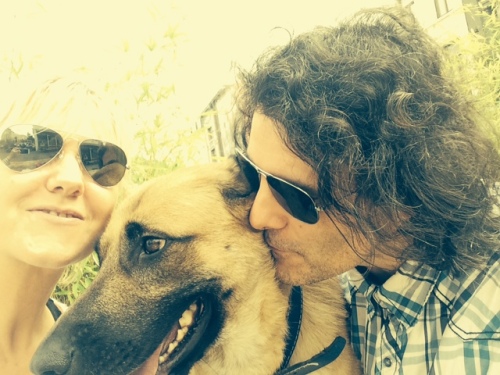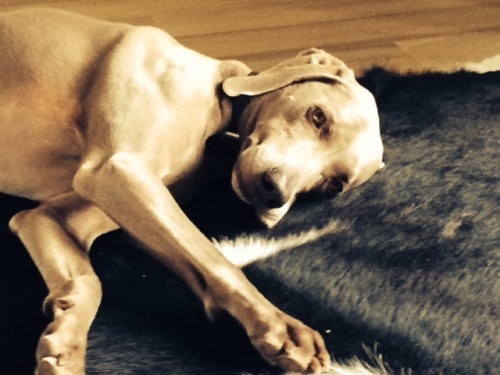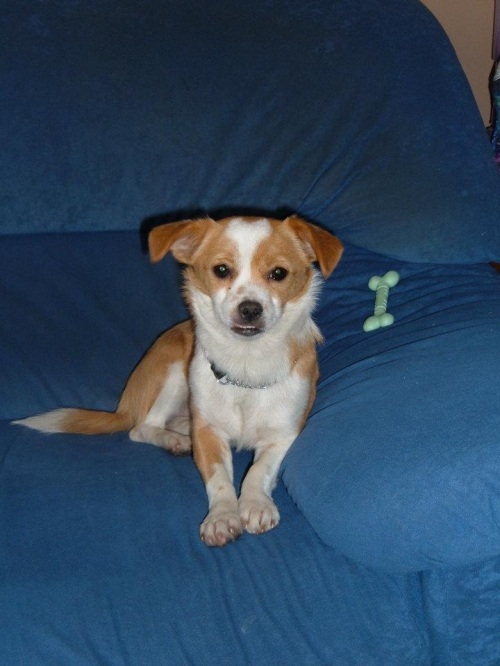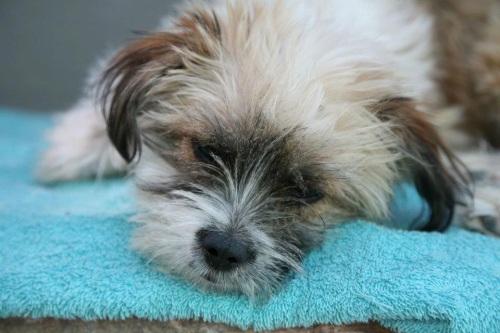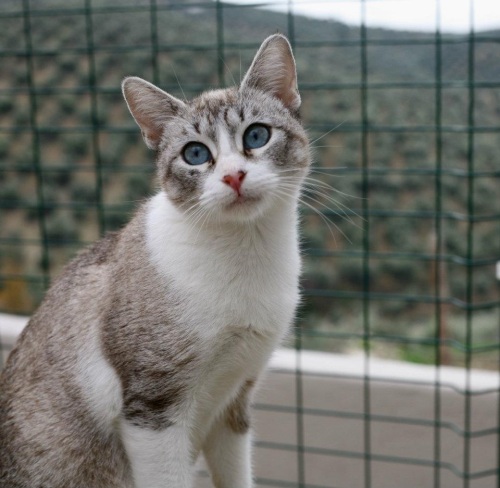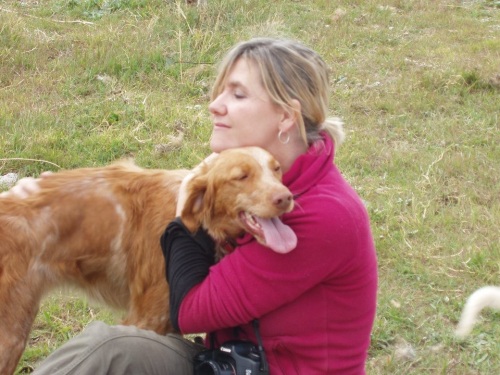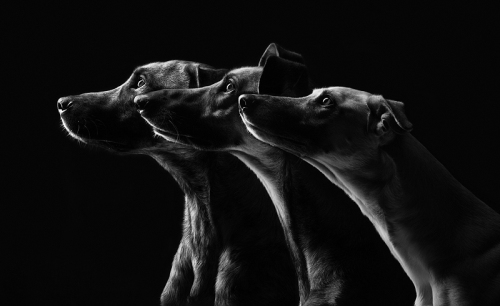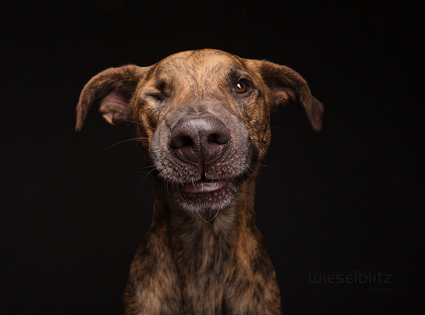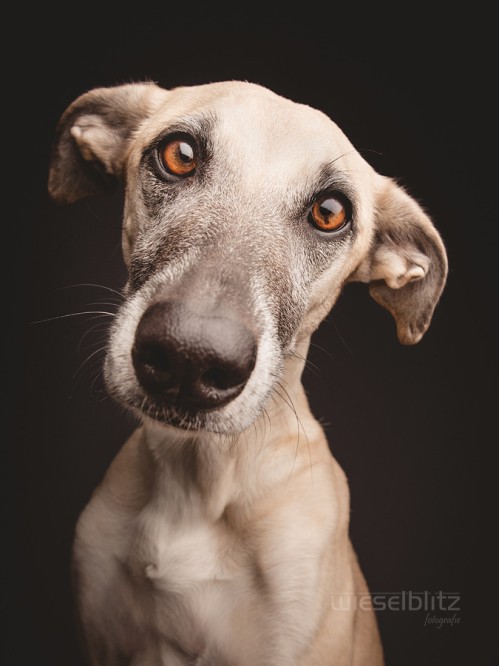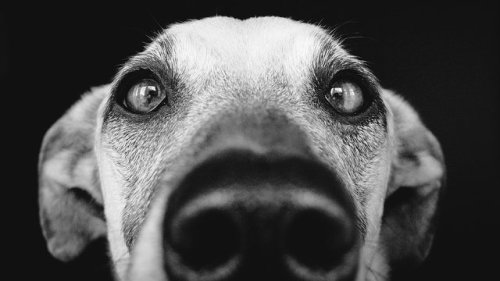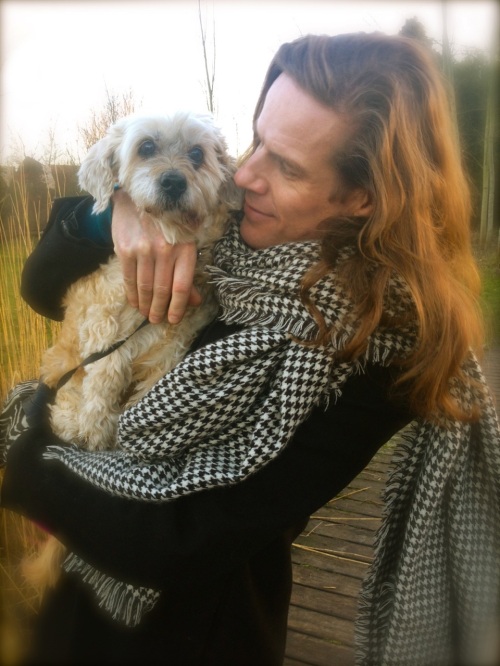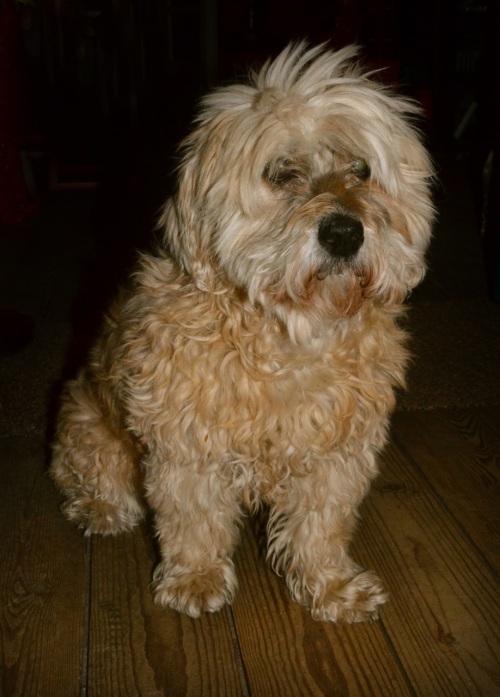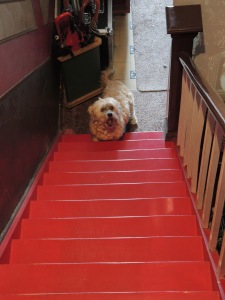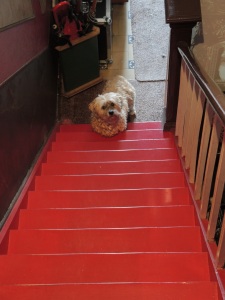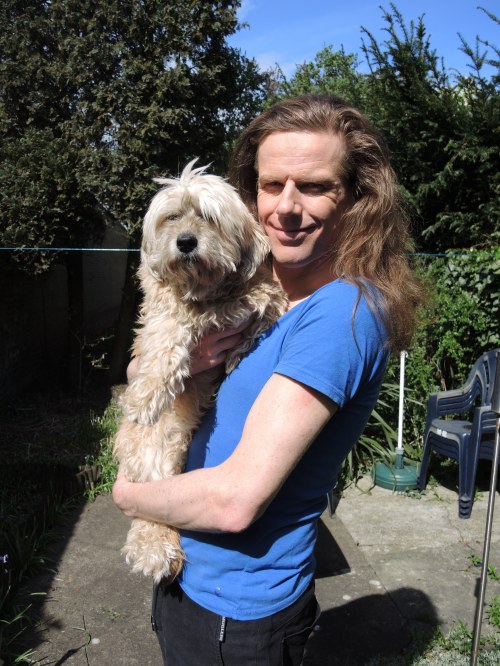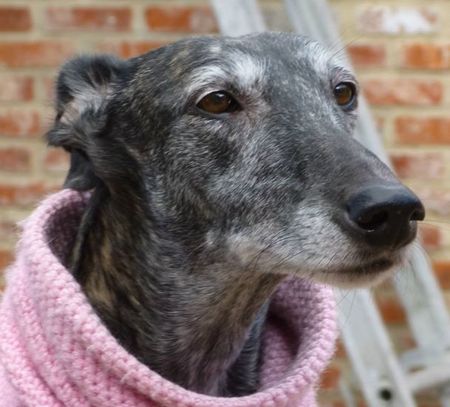Animal Care España (ACE) was founded in 1999 by Fabienne Paques. She was so shocked after seeing a Spanish killing station, that she immediately decided to do what she could to help the enormous population of Spanish stray (and dumped) dogs. My biggest respect for this remarkable lady… Since founding ACE, she has rescued 16 000 dogs, and helped finding them forever homes.

Can you introduce ACE to the new reader?
I founded ACE in 1999. The goal was and is to rescue dogs in Spanish killing stations. 90% of the dogs we shelter come from these stations. We care for them, nurse them back to health an adopt them out in a responsible manner. We give every dog a chance, and so rescue all breeds, especially the ones that need the most help. As we think that every life counts, we also take in “difficult cases”.
Why did you start this organization?
As a child, I already rescued all kinds of animals: I brought home every animal in need (much to my parents dismay…) My whole life I’ve been concerned with animals and people in need. Although lately it seems that animals have taken over… It’s my life’s purpose to do my best for dogs in need, and I go very far in that, even when it seems impossible. Animals can’t defend themselves. Here, in the South of Spain, they’re nothing more than disposable objects. It’s unbelievable what people do to them. On the 11th of December,1999, I started my own shelter, and the motivation never left me… On the contrary, it grows every day.
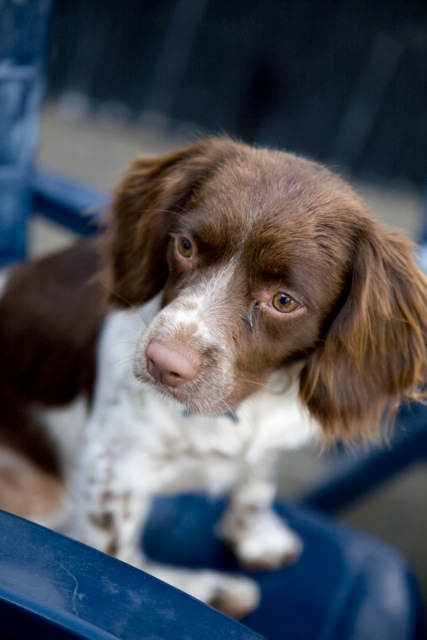
What is the best part of your job? And the hardest part?
The hardest part is taking the dogs out of the killing stations. We can never take all of them, so we have to make choices… We always go when we have space in our shelter for about 40 dogs, but even then, we have to leave so many dogs behind. It’s very harrowing, emotionally, when you have to drive back, leaving all those other dogs behind. The ones that we can’t take, get destroyed in the killing station. It’s also hard when we rescue a dog in poor health, try so very hard, and then the dog still dies… Little puppies dying in our arms…
The best part is when we see the dogs in their soft beds in their new homes, getting spoiled and being loved. When we have our annual meeting in the Netherlands and in Belgium, we see them again, and then the memories come flooding back: remembering that dog in the killing station in Spain, waiting to be destroyed… Witnessing the “before and after” transformation of every rescued dog is definitely the most rewarding part.
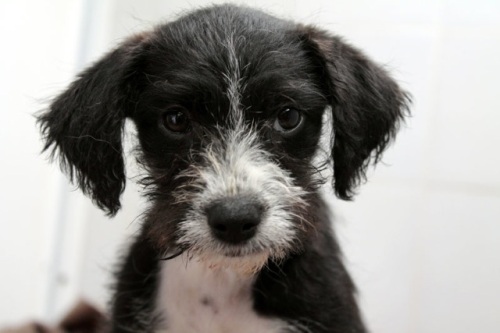

Why Spain? What are the specific problems there regarding (stray) dogs?
My parents had a holiday house here, so that’s how I knew Spain. One day, a friend took me to the killing station LA CALA DE MIJAS, and since that day, I wanted to make a difference. It was hard to get started, people were against it… But I persevered, because I just couldn’t accept this gruesome situation. Today, we have rescued 16000 dogs.
The problem in Spain is that they work with this system of killing stations: young and old dogs alike get just ten days time to get adopted. After those ten days, they are killed. Many get gassed, because that’s the cheapest method. It’s unbelievable, but these killing stations are funded by the Spanish government. Staff are getting paid to catch stray dogs and kill them within ten days. When dogs are brought to the “shelter” by the owner, then they get killed immediately. It’s normal for the Spanish to dump their family dog at a killing station when they no longer wish to take care of it (or when they want another one). Spaying and neutering is not done here, in this very “macho” world. So every female dog gets approximately two litters of puppies a year. The puppies are given as gifts to family members, or even strangers. When they’re no longer “cute”, they get dumped in trash bins or killed in the most horrible ways. You have no idea what we see here every day, the horror. When it comes to animal welfare, Spain still has a very long way to go. The situation is just horrible.
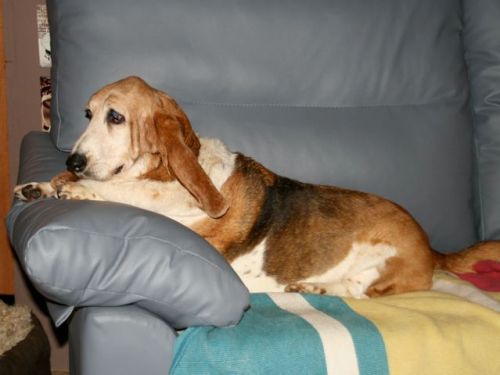

A lot of dogs in the shelter of ACE are Spanish hunting dogs. Can you tell us a bit more about why this is?
The dogs that suffer the most, are the hunting dogs. Not just Galgo’s, but also, and especially, Podenco’s, in all sizes. Most hunters mistreat their dogs in horrible ways. They keep them in tiny, disgusting and dark stables, and don’t provide them with enough food and water. They usually feed the dogs stale bread, to starve the dogs, so that they become better hunters. (Because they’re so starved, the dogs will hunt anything.)
After about four years, almost all the dogs are killed by hanging. Some “lucky ones” get dumped in the killing stations. They are then replaced by “fresh” Podenco puppies, provided by female Podenco’s that are chained and have new litters of puppies constantly.
The Spanish hunting dogs live horrible lives, but nobody takes any action here, because a lot of politicians and “big names” are hunters themselves. They paint their dogs a certain color, or they cut their tails in a certain way, so that they recognize them by the end of the hunt and can use them again the next time (at least the ones that survive…) . Our documentary gives you more information about the fate of the Spanish hunting dogs.

Some people say: “Why bring dogs from other countries here? Our own shelters are full already.” What is your response to this?
I think every dog, cat, anyone in need of help, deserves a second chance, no matter where they are in the world. We rescue these animals, spay/ neuter them, and adopt them out to people in the seven countries we work with. Our animals are perfectly in order with the European laws. They go to their new homes as companion animals and cannot reproduce. They become a wonderful addition to a family. The dogs in Spain are special, in the sense that they didn’t get dumped through a fault of their own, but because their owners just got tired of them, or want a new dog: another color, another breed… Or their dog had a litter of puppies and they rather keep one of the puppies and get rid of the mother dog.
The Spanish dogs that get dumped, are not used to being loved and cared for. They are usually being kept outside, living with other animals in stables. These dogs are so thankful to get a bit of attention, a bit of love. Most dogs at our shelter are so sweet and wonderful. And I can speak from experience, because I adopted 17 of them myself. The biggest one weighs 85 and the smallest 3,5 kg, and they all live together in harmony. They play together, sleep together, never fight… They bring so much joy and humor into the household, and really enrich our life.
Yes, shelters are full everywhere, but we have just as much right to rescue a dog as all the other shelters. It doesn’t matter where it is, but every life has the right to live!
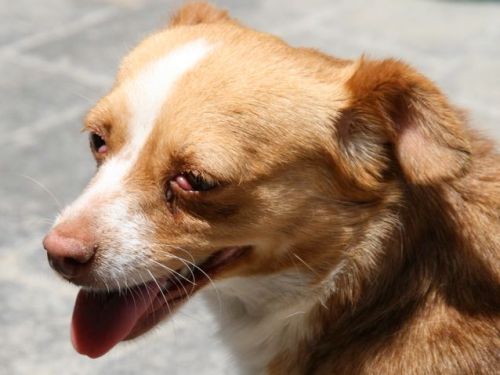
Some people are also afraid that dogs adopted from other countries can bring diseases with them. Is this fear justified?
Diseases are everywhere. The illnesses we get here in Spain, are all perfectly cure-able. If we go about this in a professional way, there is no problem. Every dog can get ill: in Spain, Romania, as well as in Belgium. Some people just use this argument to spread fear and to make our Spanish dogs look bad, when in fact all of them are being checked for Mediterranean illnesses, and are being treated when they have health issues. They get vaccinated, spayed or neutered, get a rabies shot, de-wormed, get anti flea treatments… When the dog suffers from Leishmania or Filaria, we inform the potential adopters, and in that case, the dog only goes to its new home when the illness is treated and under control. These illnesses are not fatal when the dogs receive the proper treatment. The problem is that often there’s a stigma attached to these dogs in the countries of the adopters, and they sometimes end up getting euthanized because of it (mostly in Finland, Denmark, Norway, less so in Belgium and the Netherlands). Most of our dogs don’t die of Leishmania or Filaria, but from old age or another cause. Disease are everywhere, but with proper treatment, it’s perfectly possible to keep them under control.
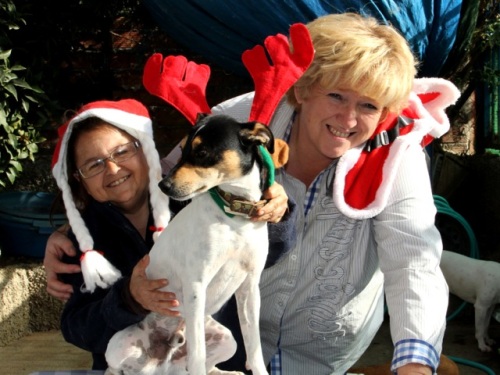
Isn’t it very tempting to keep (some of) the animals yourself? And have you already done this?
It’s normal to adopt some of the dogs yourself… You fall in love every day!
If you have any adopted animals yourself, can you tell us a little bit about them?
My husband and me have 17 dogs of our own, and always about 10 in foster until they go home. We have a clean house and a lovely family. It is a lot of work, but we love to live in this adorable, kind and loving atmosphere. Nothing can bring more satisfaction into your house than a dog saved from death, street or hell.

You take in mainly dogs, but I see on your site that you also have some cats up for adoption. What’s the situation regarding stray cats in Spain?
The situation regarding cats is even worse than the dogs. These cats stand no chance at all… We only have a limited amount of cats up for adoption, because we started a project for feral cats: we spay and neuter them, get vaccinated, and then we let them live in freedom in our refuge, on the hill. We feed them and provide them with water, and get treatment when they’re ill. We can’t do more than this. We try to make a difference by putting some cats up for adoption, but it’s very hard. We do what we can. Cats here get poisoned, destroyed, killed… When you go to a killing station and visit the cat ward… It’s just horrible.
Do you euthanize animals in your shelter? Why (not)?
We are a no kill organization. We only euthanize the dogs that are very aggressive, or fatally ill. Otherwise, we fight or every life.
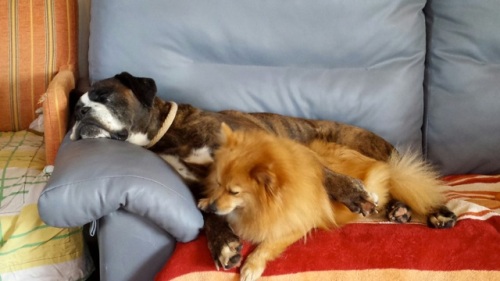
Can you describe a “normal” work-day at the shelter?
Every day is chaotic and different… But in general this is our schedule:
– We start at 8 o’clock… We have 4 wards with dogs, and the dogs of the 1st ward get to go on the “run free field” for one hour. Afterwards they go back inside and we feed them.
– 10 o’clock… Dogs of ward no. 2 in the field, they run for one hour, go back inside and eat… Meanwhile we clean inside. In ward 3 are dogs that can’t be together with other dogs, so we walk them individually. Ward 4 is dogs in quarantine: we clean them and take care of them but don’t walk them, as a precaution.
– 12 o’clock: lunch for our staff and volunteers
– 12u30h: preparing flights: washing and grooming the dogs, prepare flight benches…
– Meanwhile in the clinic our vet works from 9-15h: every day we test dogs, check them, clean teeth, spay and neuter… Dogs with problems get extra attention from our vet.
– Medication rounds every day at 13h: dogs in treatment get their medication; new dogs get de-wormed and checked.
– 15h: second round of cleaning until 17h
– 17h – 20h: evening shift for cleaning and treating dogs that are ill.
– In the meantime we receive visitors, give them information, we film new dogs and put their info on the site, we drive dogs to the airport, where they will begin their journey to their new homes…
Every day is hectic and busy, we really can use all the help we can get.

How can people help your organization?
Every kind of help is welcome. We do all our work with the help of donations, and with our own money. We work with volunteers and foster parents to the dogs… It’s not easy work, people demand more and more of us, and often seem to forget that we’re a rescue organization. It’s hard work and we really do need help. You can help by virtually fostering a dog , donating food and other goods, donating money for medical procedures… Volunteers are always welcome to come and help.
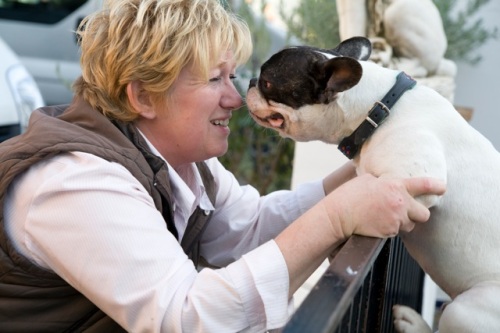
In which countries can the dogs of your shelter be re-homed?
Belgium, the Netherlands, Austria, Germany, Finland, Denmark and Spain.
How would you convince potential pet owners to adopt instead of buy?
When you adopt a stray dog… I don’t have to explain it to you, the dogs do that themselves. I can’t describe in words what you will get back from these dogs…


All photos were provided to me by ACE.




